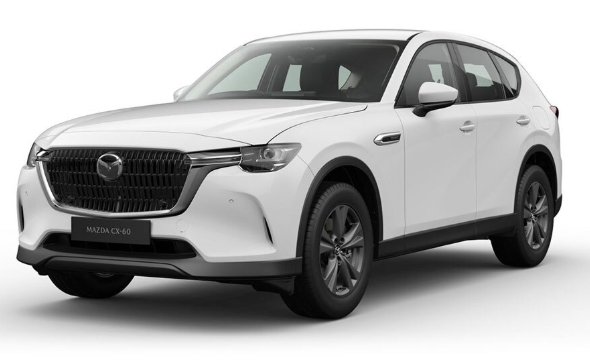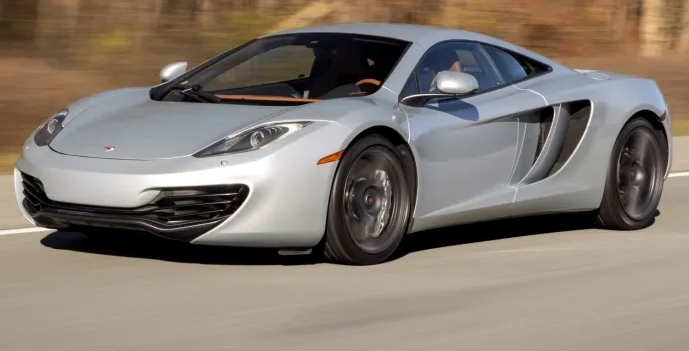From Rally Icon to Performance Legend: The Evolution of the Subaru WRX
The Subaru WRX. The very name evokes images of gravel-spitting, turbocharged exhilaration, a symphony of boxer engine growl, and a badge synonymous with rally racing prowess. For decades, this compact Japanese sedan has carved a unique niche in the automotive landscape, evolving from a homologation special into a bona fide performance icon. Its journey is a fascinating blend of motorsport DNA, practical engineering, and unwavering enthusiast devotion. This article will delve into the rich history of the Subaru WRX, tracing its evolution through its various generations, models, and trim levels, and exploring what makes it a legend.
The Impreza’s Genesis: The Foundation of a Legend (1992-2000 – First Generation)
The story of the WRX doesn’t begin with its own nameplate, but rather as a potent variant of Subaru’s compact family car, the Impreza. Born out of the need for Subaru to homologate a vehicle for Group A World Rally Championship (WRC) racing, the original Impreza WRX (World Rally eXperimental) burst onto the scene in 1992.
The first generation Impreza WRX was a revelation. It featured a turbocharged 2.0-liter EJ20 flat-four engine, delivering a potent 237 horsepower in its initial iteration. Crucially, it also boasted Subaru’s signature symmetrical all-wheel-drive system, a cornerstone of its rally dominance. The aggressive styling, featuring flared fenders and a prominent rear wing, immediately signaled its performance intent.
Within this first generation, several key models and trims emerged:
Impreza WRX (GC/GF/GM chassis): The standard WRX model, the workhorse of the lineup.
Impreza WRX STI (GC/GF/GM chassis): Introduced in 1994, the STI (Subaru Tecnica International) variant represented the pinnacle of WRX performance. It featured engine enhancements (higher boost, revised ECU, forged internals), stiffer suspension, stronger brakes, and often a more aggressive aerodynamic package. Early STIs were identifiable by their blue paint, gold wheels, and STI badging. Power increased significantly over the generation, reaching around 270 horsepower in later models.
Specific STI sub-models like the WRX STI Type RA (Record Attempt) were produced in limited numbers for homologation purposes and featured weight-saving measures and further performance tuning. The WRX STI V-Limited was another special edition, often featuring unique color schemes.
Impreza WRX Limited/Sports Sedan: These trims offered a slightly more refined interior and a less aggressive aesthetic, but still retained the turbocharged engine and AWD.
Impreza WRX Wagon (GF chassis): For those who desired performance with a practical cargo space, the WRX wagon offered a compelling option.
The first generation laid the groundwork, establishing the WRX’s reputation for raw performance, exceptional handling, and its undeniable connection to the world of rallying. Its ruggedness and tunable nature also fostered a dedicated aftermarket and enthusiast community.
.

.
Refinement and Expansion: Embracing a Global Audience (2000-2007 – Second Generation)
The second generation Impreza, known internally as the “Bugeye” (2000-2002) and later the “Blobeye” (2002-2005) and “Hawkeye” (2005-2007), saw Subaru further refine the WRX formula. While the core recipe of a turbocharged boxer engine and AWD remained, the styling underwent significant changes, with the initial “Bugeye” design being particularly controversial yet iconic.
Underneath the skin, Subaru continued to develop the EJ20 and later the EJ25 engines, increasing power and responsiveness. The chassis was also stiffened, and suspension geometry was tweaked for even better handling.
Key models and trims for the second generation include:
Impreza WRX (GDA/GGB chassis): The sedan continued to be the primary WRX offering. Power output saw a steady increase, with later models reaching around 227 horsepower in US spec.
Impreza WRX STI (GDB chassis): The STI remained the ultimate expression of the WRX, with significantly more power and a more track-focused setup. In the US, the EJ257 engine became standard, producing around 300 horsepower. The STI models were distinguishable by their more aggressive body kits, larger rear wings, and often Brembo brakes.
Special STI editions included:
WRX STI Prodrive: Developed with WRC partner Prodrive, these models featured further performance enhancements and unique styling.
WRX STI S203/S204: Limited-production, highly exclusive STI variants with even greater power and meticulously tuned chassis.
WRX STI Wagon (GG chassis): Continuing the practicality of the previous generation, the
WRX wagon was also available with STI performance.
Impreza 2.5 RS (US Market): While not a WRX, the 2.5 RS acted as a gateway for many Americans to experience Subaru’s sporty ethos. It featured the EJ25 engine without a turbo but boasted the sporty styling and AWD system, offering a taste of the WRX’s appeal.
The second generation saw the WRX become more accessible globally, with Subaru actively marketing it in various regions. It also cemented its status as a tuner’s dream, with a readily available aftermarket supporting further customization and performance upgrades.
The Birth of the Standalone WRX: A New Identity (2007-2014 – Third Generation)
A significant shift occurred with the third generation Impreza (GE/GH/GR/GV chassis) launched in 2007. Subaru decided to differentiate the WRX and WRX STI more distinctly from the standard Impreza. While still based on the Impreza chassis, the WRX and STI models received more aggressive styling and a wider track, setting them apart visually. This generation also saw the introduction of the “widebody” styling elements that would become a signature of the STI.
This generation also brought about structural changes and a continued focus on chassis rigidity, further enhancing the WRX’s already impressive handling characteristics.
Key models and trims for the third generation:
Impreza WRX (GH8/GE8 chassis): The WRX sedan received a turbocharged 2.5-liter EJ255 engine, producing around 265 horsepower. It featured a sportier suspension and a more aggressive body kit than the standard Impreza.
Impreza WRX STI (GRB/GVB chassis): The STI received the more powerful EJ257 engine, now producing around 305 horsepower. It also received a wider body, a more pronounced rear wing, performance brakes, and a limited-slip center differential for superior traction.
WRX STI hatchback (GR chassis): A notable addition was the WRX STI hatchback, offering a more practical alternative while retaining the full performance of the sedan.
WRX STI Special Editions: Throughout this generation, Subaru continued to release limited-edition STI models, often with unique paint schemes, performance upgrades, and badging, such as the WRX STI Hatchback Special Edition and various motorsport-inspired variants.
The third generation marked a turning point, with the WRX and STI beginning to shed their Impreza roots in terms of public perception and marketing, solidifying their individual identities as distinct performance vehicles.
The Era of the Standalone Model: Evolution and Refinement (2015-Present – Fourth Generation & Beyond)
In 2015, Subaru made another pivotal decision: to officially separate the WRX and WRX STI from the Impreza nameplate entirely. The fourth generation (VA chassis) became the first to be marketed solely as the Subaru WRX and WRX STI, underscoring their status as standalone performance models.
This generation saw a significant evolution in design and engineering. The WRX received an all-new 2.0-liter turbocharged FA20DIT engine, delivering 268 horsepower and improved fuel efficiency. The STI, however, continued with a more powerful 2.5-liter EJ257 engine, producing 305 horsepower, and maintaining its reputation as the ultimate performance variant.
The fourth generation has seen continuous refinement and the introduction of new models and trims:
Subaru WRX (2015-Present):
WRX Premium: Offered a step up from the base model with features like heated seats, fog lights, and a sunroof.
WRX Limited: Added leather upholstery, power driver’s seat, and advanced safety features.
WRX STI (2015-2021): Continued to be the flagship, featuring the EJ257 engine, Brembo brakes, DCCD (Driver-Controlled Center Differential), and a track-tuned suspension.
WRX STI Limited: Added premium interior appointments to the STI.
WRX STI Type RA (2018): A limited-edition, track-focused model with enhanced engine performance (310 hp), upgraded suspension, and lightweight construction.
WRX STI S209 (2019): A highly exclusive, US-market only model, featuring bespoke aerodynamic enhancements, a more powerful EJ25 engine (341 hp), and a wider body.
WRX (2022 Facelift): The WRX received a significant update with the FA24F 2.4-liter turbocharged boxer engine, producing 271 horsepower. This new engine offered improved torque and responsiveness.
WRX GT (2022-Present): A new trim level that replaces the Limited, featuring electronically controlled adaptive suspension and Ultrasuede-trimmed power seats.
WRX STI (2022-2024): The final iteration of the EJ25-powered STI, this generation saw minor refinements. Production of the EJ25 STI ended in 2024, marking the end of an era. Subaru has stated that a future STI will likely utilize a different powertrain, potentially a hybrid.
The current era of the WRX emphasizes a blend of everyday usability and exhilarating performance. While the STI remains the pinnacle for hardcore enthusiasts, the standard WRX has evolved into a highly capable sports sedan that competes effectively in its segment. The commitment to AWD, turbocharged power, and driver engagement remains at the core of the WRX’s DNA.
Beyond the Models: Core Elements of the WRX Evolution
Throughout its evolution, several key elements have remained constant, contributing to the WRX’s enduring appeal:
Boxer Engine: The unique flat-four engine configuration, with its low center of gravity and inherent balance, has always been a defining characteristic of the WRX.
Symmetrical All-Wheel Drive: Subaru’s sophisticated AWD system provides exceptional grip and stability in all conditions, a crucial element of its performance and rally heritage.
Turbocharging: The power and thrill associated with the turbocharger have been central to the WRX experience from day one.
Sporty Design: From aggressive styling cues to functional aerodynamic elements, the WRX has always looked the part of a performance machine.
Enthusiast Community: The WRX has cultivated a fiercely loyal and passionate following, a testament to its capabilities and character.
Rally Heritage: While its WRC days are in the past, the Impreza WRX’s dominance in rally racing is indelibly linked to its identity and continues to inspire its DNA.
Conclusion
The Subaru WRX’s journey from a rally homologation special to a standalone performance legend is a remarkable tale of continuous evolution. Each generation has built upon the strengths of its predecessor, refining the driving experience, enhancing performance, and adapting to market demands. From the raw, unadulterated excitement of the early Impreza WRX to the sophisticated and technologically advanced models of today, the WRX has consistently delivered a unique blend of practicality, performance, and an undeniable sense of occasion. As Subaru embarks on the next chapter for the STI, one thing remains certain: the spirit of the WRX – the thrill of turbocharged power, the grip of AWD, and the unwavering connection to performance driving – will undoubtedly continue to captivate enthusiasts for years to come. The WRX is more than just a car; it’s an experience, a legend forged in the fires of competition and refined by decades of automotive passion.








